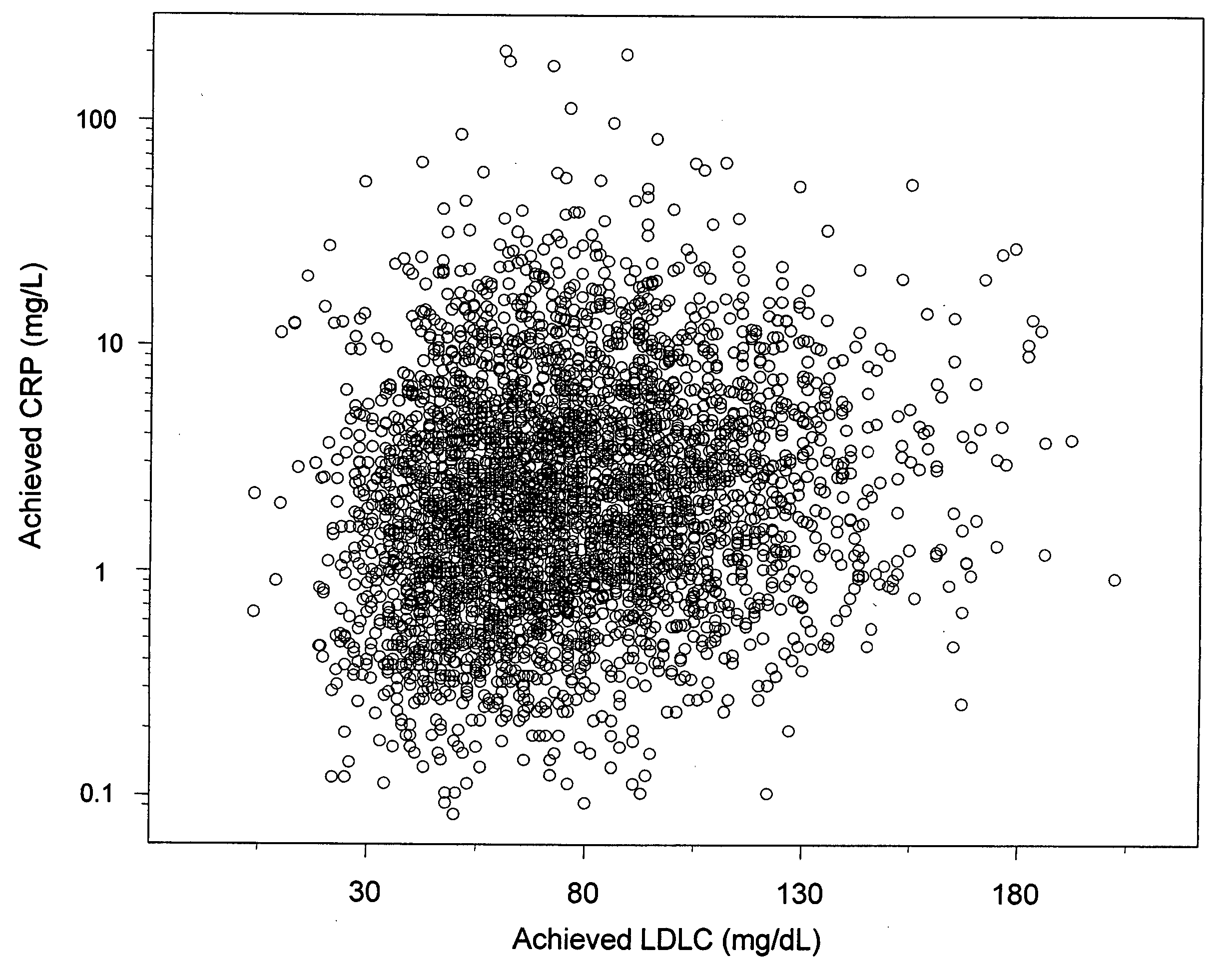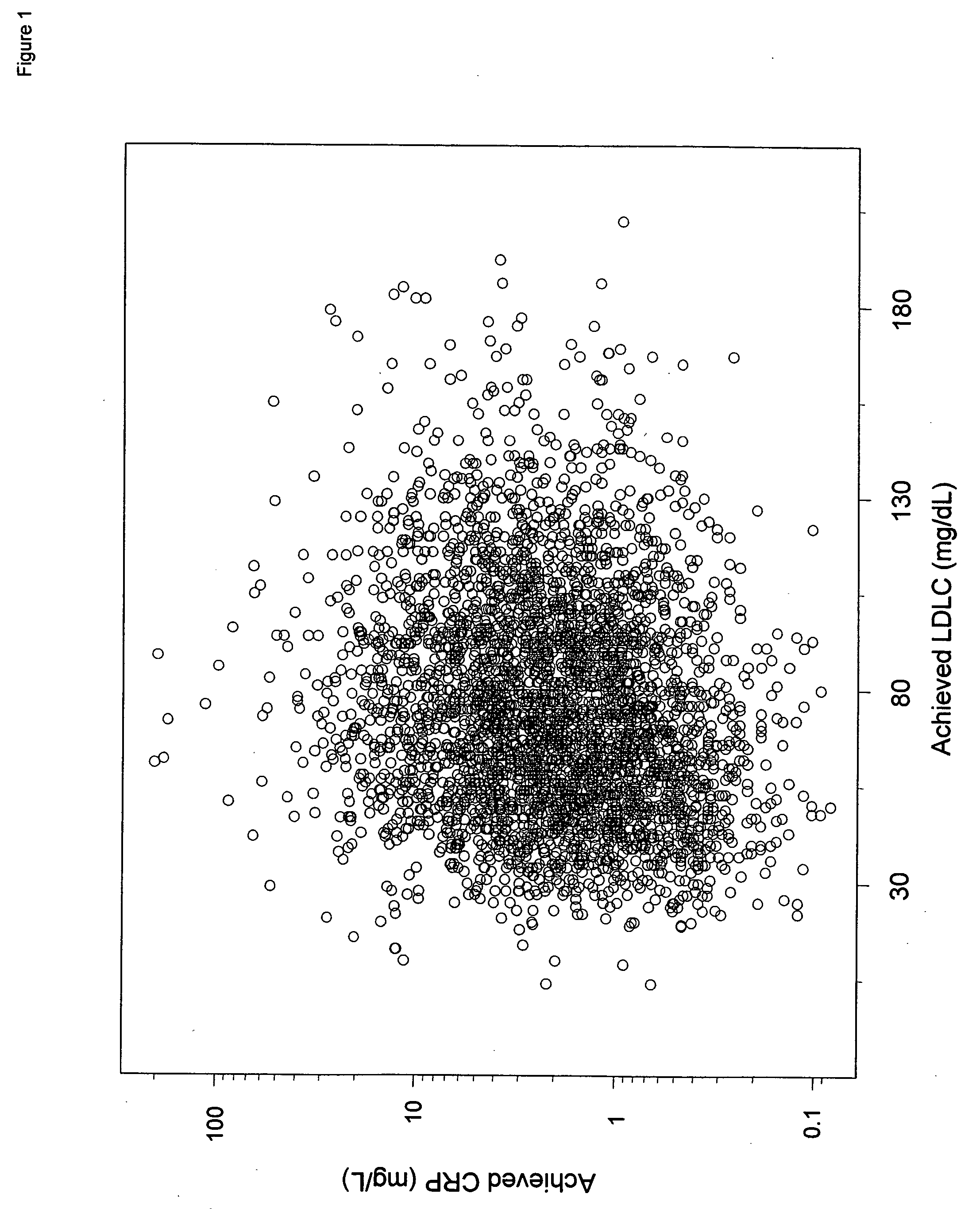Relevance of achieved levels of markers of systemic inflammation following treatment
a systemic inflammation and marker technology, applied in the field of markers of systemic inflammation, can solve the problems of no studies teaching or suggesting the use of crp levels as a guide to therapy, the risk of myocardial infarction remains a major common cause of morbidity and mortality, and the level of crp is associated with the risk of myocardial infarction in human subjects, so as to reduce the risk of a future cardiovascular event, reduce the therapy level of a marker, and reduce the risk of recur
- Summary
- Abstract
- Description
- Claims
- Application Information
AI Technical Summary
Benefits of technology
Problems solved by technology
Method used
Image
Examples
example
[0116] This study addressed the relationships between achieved LDLC levels, achieved CRP levels, and recurrent myocardial infarction or coronary death among 3,745 acute coronary syndrome patients treated with atorvastatin 80 mg or pravastatin 40 mg for 24 months.
[0117] Statin therapy lowers the risk of cardiovascular events by reducing plasma cholesterol and practice guidelines for patients with known cardiovascular disease emphasize the importance of reaching target goals for LDLC (1). However, we have shown that statin therapy results in a greater clinical benefit when levels of the inflammatory biomarker CRP are elevated (2,3) and that statins lower CRP levels in a manner largely independent of LDLC (3-6). These findings, along with basic laboratory evidence, have lead to the hypothesis that in addition to being potent lipid lowering agents, statins might also have anti-inflammatory properties that are important for prognosis and treatment. If so, then the level of CRP achieved ...
PUM
| Property | Measurement | Unit |
|---|---|---|
| diastolic pressure | aaaaa | aaaaa |
| diastolic pressure | aaaaa | aaaaa |
| diastolic pressure | aaaaa | aaaaa |
Abstract
Description
Claims
Application Information
 Login to View More
Login to View More - R&D
- Intellectual Property
- Life Sciences
- Materials
- Tech Scout
- Unparalleled Data Quality
- Higher Quality Content
- 60% Fewer Hallucinations
Browse by: Latest US Patents, China's latest patents, Technical Efficacy Thesaurus, Application Domain, Technology Topic, Popular Technical Reports.
© 2025 PatSnap. All rights reserved.Legal|Privacy policy|Modern Slavery Act Transparency Statement|Sitemap|About US| Contact US: help@patsnap.com



